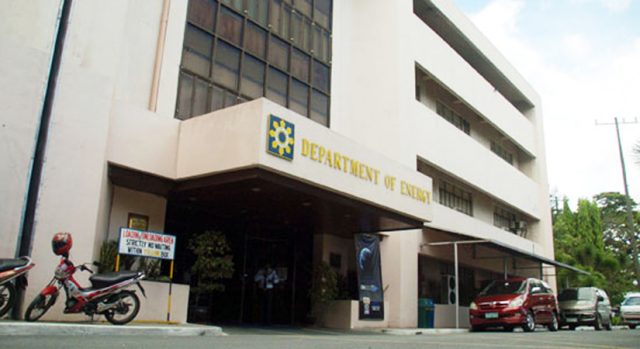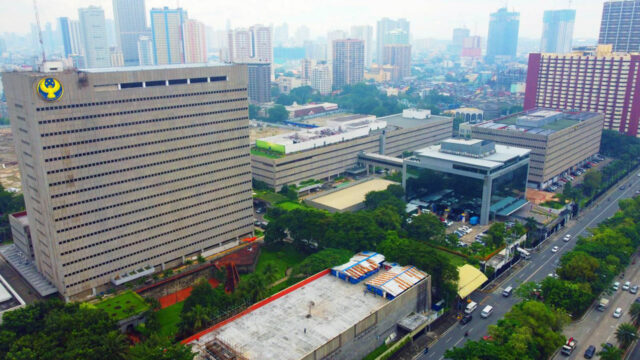As we write this column, the Bangko Sentral ng Pilipinas (BSP) Monetary Board (MB) is still debating on its next monetary policy stance after jacking up the policy rate by another 25 basis points (bps) in an off-cycle meeting last October.
It was one critical move that must have been driven by the central bank’s latest forecasts as of last month, placing this year and the next year’s inflation at 6.2% and 3.9%, breaching and nearly breaching, respectively, the official target of 2% and 4%. The projection for 2025 was announced at higher than the midpoint. That cautious, precautionary act was consistent with inflation targeting and with monetary policy that works with a long and variable lag.
In more ways than one, hawkish monetary policy and forward guidance should explain much of the peso’s relative stability despite the robustness of the dollar. That is positive in the fight against inflation.
With a whole constellation of upside risks to future inflation including higher power rates and transport fares as well as the impact of minimum wage adjustments outside Metropolitan Manila, the BSP also announced more elevated risk-adjusted inflation forecasts.
We have no doubt these upside risks must be the underlying reasons for the higher inflation expectations based on the responses of economists and other market forecasters.
That off-cycle monetary tightening could very well convince the market that the central bank is absolutely committed to scorching inflation. That could prevent second-round effects from propagating themselves, and from getting inflation more entrenched.
But that off-cycle monetary tightening could also have some market players thinking that the BSP was trying to catch up with the necessary adjustment in monetary policy before the MB’s last two meetings for the year. And alas, the BSP faced an enormous handicap. Without complete information on the actual October inflation and the actual 3rd quarter output performance, and against the compelling evidence of upside risks to inflation as shown by the forecasts, it was correct for the BSP to have opted for a symbolic baby step of 25 bps.
Which brings to mind the current policy dilemma involving the US Federal Reserve. Almost without fear, the US Fed bombarded the market with an unprecedented series of monetary tightening with the target federal funds rate now peaking at 5.5%. In the aftermath, US Fed Chair Jim Powell, in a recent IMF conference, said he was “gratified” by the “retreat in price pressures” but was wise not to go beyond that. He could have assured the market that the US Fed is done with hiking interest rates but instead, he stressed that inflation in the US proved more persistent than they originally thought. We like the way Powell expressed his anti-inflation sentiment: “We know that on-going progress toward our 2% goal is not assured: inflation has given us a few head fakes.”
Like our own BSP Governor Eli Remolona, Powell said “If it becomes appropriate to tighten policy further, we will not hesitate to do so.” In the case of the US Fed, they have extended a pause in their otherwise hawkish stance. This pause was definitely a necessary compromise to the US Fed’s great sense of uncertainty and their singular focus to get the job done. Powell even went to the extent of warning against the risk of being misled by some good data on prices, indicating that their work to achieve its 2% target had a “long way to go.”
The US Fed, by all indications, finds itself between the risk of being misled by a few good months of data on inflation, and the risk of overtightening. No different from many central banks around the globe, the US Fed faces a host of headwinds that could rein in economic growth from what the Financial Times described as “breakneck” 4.9% annualized performance during the 3rd quarter. No one so far has questioned the resilience of the US economy despite the restrictive monetary policy.
The collateral harm continues to be felt in the US equities and government bonds markets which have been experiencing prolonged losses after the Powell statement was released to media. Recent reports show that US Treasuries remain under pressure. Despite the increasing loss of momentum in the US labor market, the US Fed did not spare a word in saying that it is not confident that it is finished tightening.
We wish the BSP would continue to tighten even with baby steps today, and if the numbers will continue to be more cooperative and appropriate, start pausing in December. We have a few reasons to offer.
One, tightening today would be a logical sequel to the October off-cycle adjustment in the policy rate.
Two, the lower reading of inflation last week, just like in the many years before that, would certainly have some effects on the forecasts of inflation this year and the next two years. That to us is backward looking, something that could push back the increasing forward-looking inflation expectations of some quarters of the market. Experience tells us that the implications on the forecasts would not depart significantly from the October 2023 forecasts and they actually indicate a breach of the target this year and the next.
Three, nothing earth-shaking have altered the upside risks including the possible effect on global supply chains following the recent hostilities in the Gaza Strip and the murderous invasion of Ukraine. In fact, it has been reported that El Niño is likely to spill over to the second quarter of 2023. This will definitely increase the BSP’s risk-adjusted inflation forecasts beyond 4%.
And, four, while the central bank remains the heavy lifter, the fiscal space continues to narrow. We see sustained vulnerability of both fiscal and debt sustainability. There could be little to expect from the so-called non-monetary intervention measures beyond the hope that the tariff reduction would be extended to help arrest additional price pressure from food imports.
We also fully appreciate the concern of the US Fed about economic growth. It has to deliver on Congress’ mandate to promote maximum employment, stable prices, and moderate long-term interest rates. In the amendment of the BSP’s own charter, some legislators actually proposed to mimic the US Fed’s mandate. During our time, we took exception to such a proposal because central banks in general have limited tools to promote multiple macroeconomic goals like economic growth or full employment, and stable inflation. Central banks will be ambivalent and will end up failing to achieve both goals. Market signals would be more than confusing.
Under Section 3 of the amended BSP charter, it was slightly amended to read “the primary objective of the Bangko Sentral is to maintain price stability conducive to a balanced and sustainable growth of the economy and employment.” Only the phrase “and employment” was added to economic growth. It would have made a lot of difference if, one, the phrase “conducive to” was deleted in favor of “and” and, two, employment was qualified either as maximum, as in the US, or full, as in the literature. Otherwise, the BSP would be saddled with multiple goals with a limited number of policy instruments.
We hope the BSP will choose the road less traveled. After all, price stability promotes a higher and more sustainable path of economic growth. We are wise not to forget that persistently high inflation was one of the culprits behind the 4.3% real GDP growth in the 2nd quarter. And economic growth at an average of 5.5% for the first three quarters of the year hardly constitutes a strong argument for some immediate loosening of monetary policy. Hawkish policy statements have their own limitations.
Diwa C. Guinigundo is the former deputy governor for the Monetary and Economics Sector, the Bangko Sentral ng Pilipinas (BSP). He served the BSP for 41 years. In 2001-2003, he was alternate executive director at the International Monetary Fund in Washington, DC. He is the senior pastor of the Fullness of Christ International Ministries in Mandaluyong.













